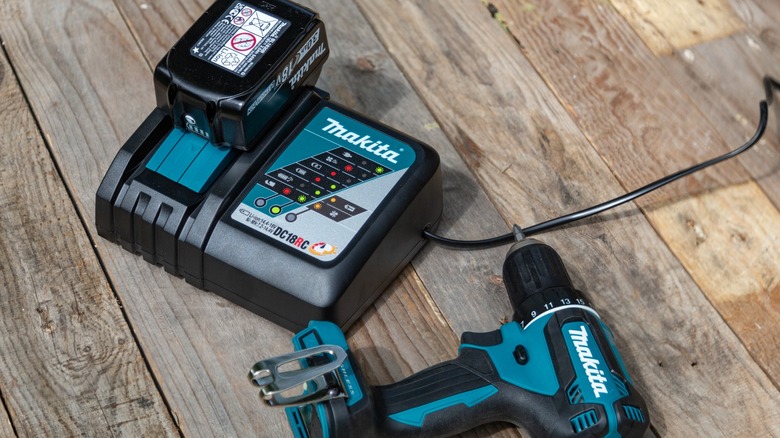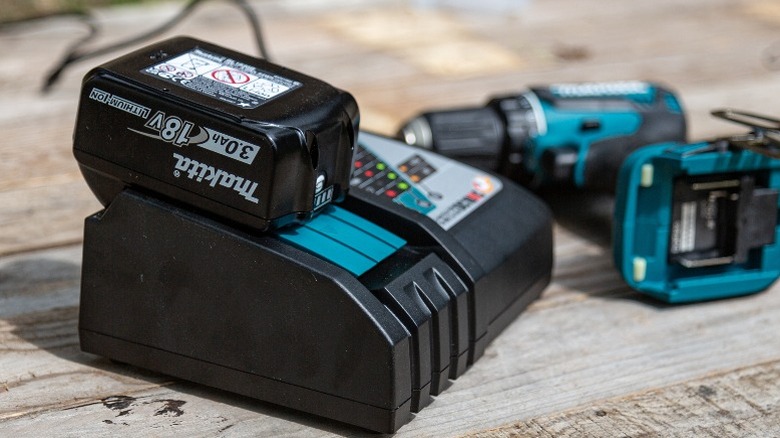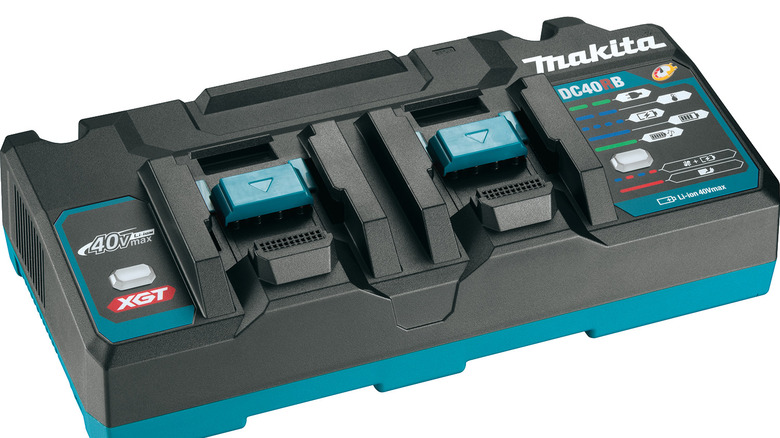What Do The Lights On A Makita Charger Mean?
There are many things about Makita that should be considered before spending money on expensive tools and investing in one or more of Makita's battery systems. One important concept is understanding the tool company's chargers, especially how to read them.
They may seem simple enough, and once you become familiar with all their components, they are easy to understand. The chargers have many icons and lights that either flash, stay solid, or alternate depending on the battery's condition. Additionally, on each charger's panel, there is an indication of what each light sequence means next to the icons.
To better help you understand the lights and their associated icons, we'll go through them and explain exactly what your battery is experiencing. Take note that the chargers mentioned in this article are all part of Makita's rapid charger line for each battery type. This consists of the 18V LXT Rapid Charger, the 40V XGT Rapid Charger, and the 12V CXT Rapid Charger. Each charger corresponds with its own battery line, though by using the 18V LXT Adapter, you can charge an 18V battery on a 40V charger.
How to read the lights on a Makita 18V charger
There are three lights on the 18V LXT Rapid Charger — red, green, and yellow. When the charger is first plugged in, a flashing green light will appear meaning it is ready for a battery. Once a battery is locked in for charging, one of two light options will happen. A solid red light means that the battery is charging and below 80%. A solid red and green light combination means it is charging and above 80%.
These chargers are designed to allow you to leave your Makita batteries on the charging dock and not overcharge them. When a battery is fully charged, which will be indicated based on your selected fully-charged notification sound, the light on the charging panel will turn solid green. If the battery is completely drained, there's a chance that it may need conditioning to fully connect to the charger. If this happens, a solid yellow light will appear. Just take the battery off and on the charger until the charger finally connects with it.
There are three other light descriptions that are important to understand. If your Makita charger light is flashing red, this means that the battery is either too hot or too cold to charge. Charging a lithium-ion battery outside of the temperature range of 32-104 degrees Fahrenheit can damage the battery. However, if the charger is flashing yellow, it is signaling a cooling abnormality. If the charger is flashing red and green lights together, the battery is defective.
What are the differences for the Makita 40V charger?
Makita's 12V CXT rapid chargers work nearly the same as the 18V chargers, except they don't have the conditioning mode light sequence. However, the 40V XGT rapid chargers are a bit different. Just like the other chargers, the panel indicates what each light color and sequence means. There are three lights on the 40V chargers — blue, green, and red. A flashing green means it is ready for charging.
A quick flashing blue means the battery is charging and under 80% charge whereas a solid blue light indicates that the battery is nearly charged between 80-100%. A solid green light with a fully charged sound of your choosing means the battery is fully charged. However, there is another flashing blue option which flashes a bit slower and stays blue longer between flashes. This means that there is delayed charging due to temperature restrictions for the battery.
If you see any red on the 40V rapid charger, that is not a good indication for your battery. Quick flashing between red and blue means the battery is charging but cooling abnormally. If the light is solid red, the battery is defective and shouldn't be used any longer. To help make sure the red light of battery death doesn't happen, make sure to properly maintain your Makita products for long-lasting performance.


